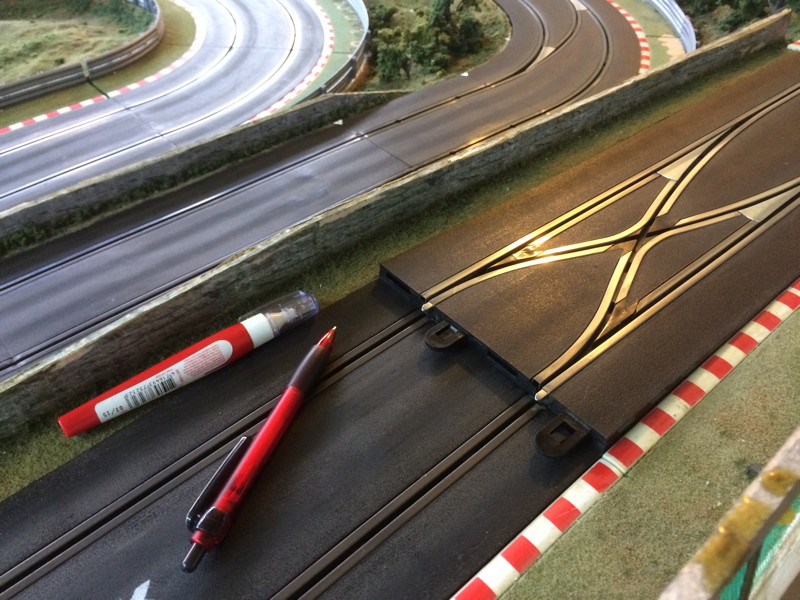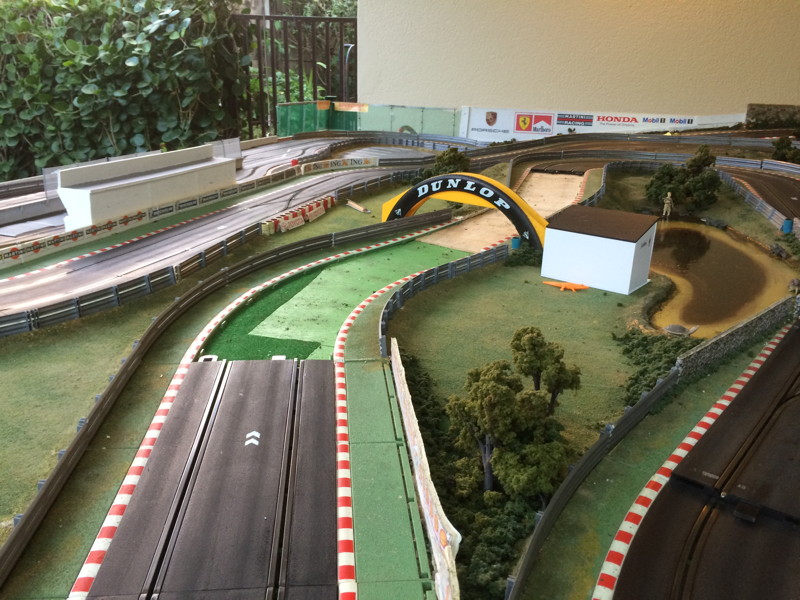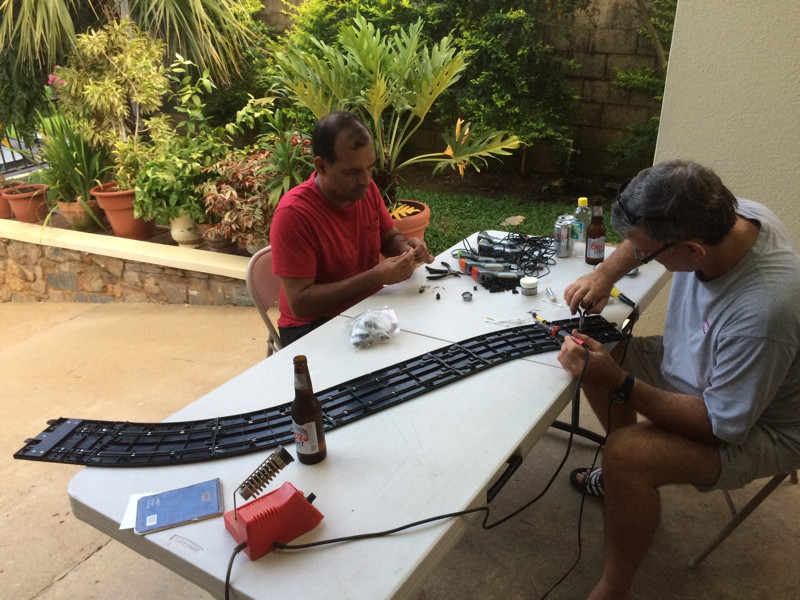Electrical track work at FRC
Posted: Mon Aug 22, 2016 10:33 am
After last event's power-related problems with our fastest and most magnetised classes where cars were slowing under load, I was joined by O'Brie and Luke on Saturday afternoon to do some track power diagnostics and fixes. We spent from around 2:30PM to just about 7:00PM using some interesting but foolproof methods developed by O'Brie to check the actual track voltage, amperage draw and RPM with a stock 18K Scaley motor and F1 chip at full throttle and to solve the power issues found. This varied quite considerably from section to section and lane to lane, something that would account for different performance between the lanes even in the slower classes.
We broke the track into five sectors using the pieces with jumpers to end each sector. We then confirmed that these pieces were receiving the same power as the PowerBase section and worked back from there to the next break. Having noted several areas in each sector where the power dropped off, we removed whole sections of track and joined them electrically using the same method which I had used previously in certain sections by soldering braid below the track to create a continuous circuit, a very tedious and time-consuming process, but helped along by each other's company and a few light beers
After putting back together all the track pieces, we did some more tests and found virtually no drop in voltage, amperage and motor RPM anywhere around the track, unlike when we had first tested it. After Luke and O'Brie left I cleaned the rails on the whole track and tested it with a couple of cars and I have to say it felt great. It even blew a Slot.It SP15 chip in my Viper unfortunately, although this was really nothing to do with the track.
All-in-all it was a very productive afternoon and I'm sure we will all benefit from the work done. Following are a few pics of the session.
Track break on back straight just before first jumper section:

Section of track below Dunlop Bridge removed for work:

O'Brie and Luke working on the same section:

We broke the track into five sectors using the pieces with jumpers to end each sector. We then confirmed that these pieces were receiving the same power as the PowerBase section and worked back from there to the next break. Having noted several areas in each sector where the power dropped off, we removed whole sections of track and joined them electrically using the same method which I had used previously in certain sections by soldering braid below the track to create a continuous circuit, a very tedious and time-consuming process, but helped along by each other's company and a few light beers
After putting back together all the track pieces, we did some more tests and found virtually no drop in voltage, amperage and motor RPM anywhere around the track, unlike when we had first tested it. After Luke and O'Brie left I cleaned the rails on the whole track and tested it with a couple of cars and I have to say it felt great. It even blew a Slot.It SP15 chip in my Viper unfortunately, although this was really nothing to do with the track.
All-in-all it was a very productive afternoon and I'm sure we will all benefit from the work done. Following are a few pics of the session.
Track break on back straight just before first jumper section:

Section of track below Dunlop Bridge removed for work:

O'Brie and Luke working on the same section:
